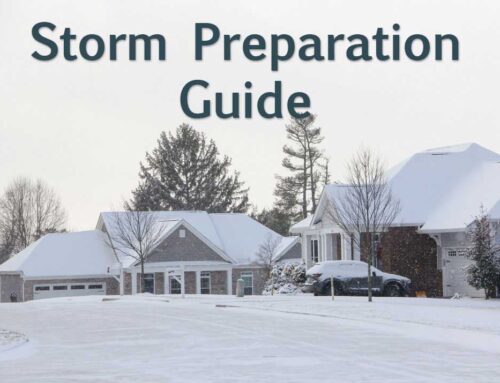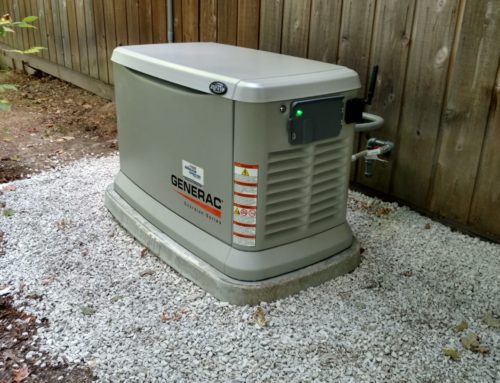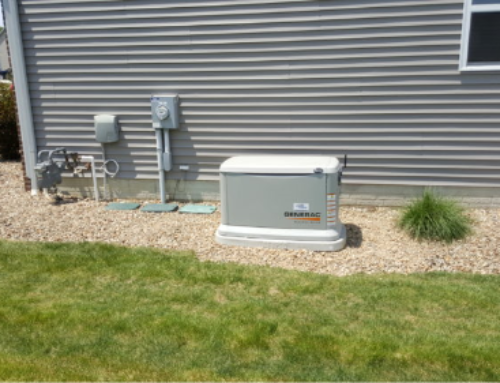Q: My wife and I are tired of being left in the dark when the power goes out around here, which is often. We want to buy a portable generator, but I’ve read conflicting advice about sizing and installing it. My wife has a home-based business, so getting this system right and making it safe is important.
A: The most common backup generator in the United States is the portable type powered by a small gas engine. Yet, there’s more to using one of these than wheeling it outside and firing it up. The key to using a generator safely is preparedness. Size it adequately, plan where and how you’ll use it, then test run the machine.
It takes a lot of calculation to properly size a home generator, and you’ll need to talk to a dealer to be sure you’ve got it right. In a nutshell, though, the machine’s wattage has to be slightly larger than all simultaneous loads. First, tally the running watts of the appliances and devices you will use at the same time. Now add the startup wattage of the largest motor—operated load liable to come on line with the other loads. Motor wattage is three to five times greater at startup than it is running at steady state, and your largest startup load will usually come from a furnace fan or a well pump. (That assumes you won’t be running an air conditioner during a power outage.) Wattage is listed on a motor’s nameplate or on the electrical data plate affixed to an appliance. If wattage isn’t listed but amperage is, calculate wattage by multiplying amps by volts. Aside from motor wattages, other loads, such as those imposed by electric water heaters, can severely strain a generator’s output. Calculate accordingly.
The risk from carbon monoxide poisoning is not to be taken lightly, so locate the machine to minimize that risk. The Consumer Product Safety Commission estimates that in 2005, for 10.6 million portable generators, there were 85 CO deaths. A rule of thumb is to keep a portable generator 10 ft. away from the house. Permanently installed generators are much safer in this regard since they are fueled not by gasoline but by cleaner-burning natural gas or propane. Make sure the generator’s distance from the house meets both the manufacturer’s specifications and the requirements of building and zoning codes (it can’t infringe on your neighbor’s property line, for example).
The next major safety issue with generators is electrical. Don’t operate a portable generator using a homemade extension cord with two pronged ends, connecting one to the generator and the other to a wall outlet receptacle. Electrifying a house’s branch circuit this way can create a fire and shock hazard, especially in older homes with weak or improper wiring.
Instead, use heavy-duty exterior extension cords to plug appliances directly into the machine, or use a single cord and connect the generator to a power-transfer switch. This device is a specialized circuit-breaker panel that is wired into the house’s regular circuit panel. It isolates circuits to be powered, while blocking generated current from flowing into the grid outside the house. Current back-feed poses an extreme hazard to utility crews working on downed lines. The reason it’s so deadly is that the voltage of the reverse flow is stepped up when it passes through the pole-mounted transformer, which normally steps down voltage to household levels. For more safety tips, see popularmechanics.com/generator.
In addition to boosting safety, a transfer switch better enables you to power built-in appliances, such as a furnace, that cannot simply be connected to an extension cord.
Finally, test run the machine. In the case of a portable generator, that means wheeling it out to the location where you intend to run it and putting it through its paces. If you’re going to run appliances from it using generator extension cords, test run the machine with the cords hooked up so that you’re sure everything will work as intended when the power goes out.
You’ll want to start up the machine on a regular basis to be sure it operates properly. Add gasoline stabilizer to its fuel. This additive will prevent the fuel from chemically deteriorating.



